Popping Boba is one of my favorite toppings on frozen yogurt. I have tried making it many times in the past, and this is the method I use to get the perfect burst every time. For the best results, you will need a precision scale for measuring the ingredients.
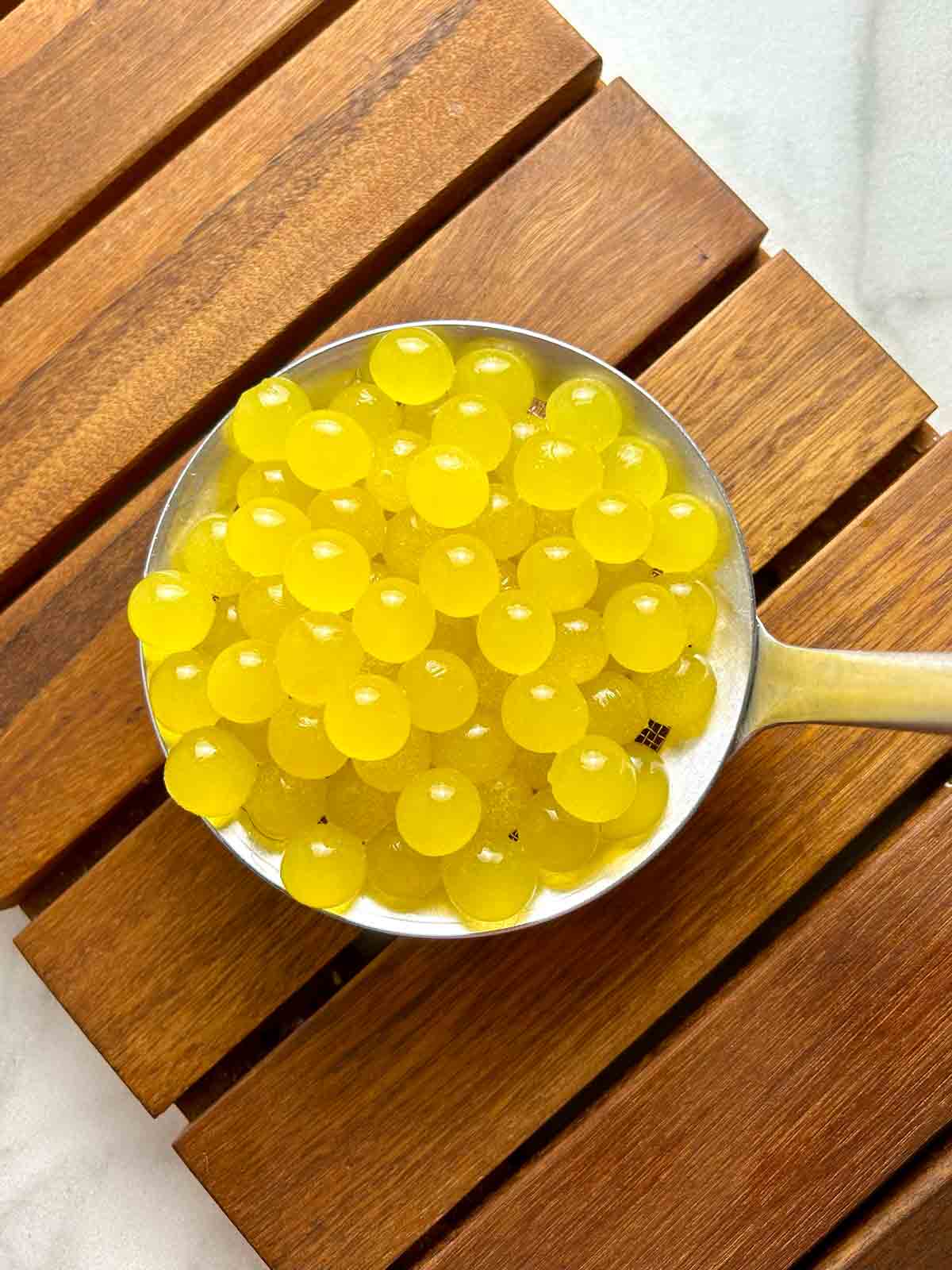
It's officially summer so I'm making more refreshing recipes at home. Last week I made frozen yogurt, and I thought to myself: "you know what would be good with this"? Popping boba! I had to search pretty deep in my pantry, but I eventually found my old jars of sodium alginate and calcium lactate.
The process of making the boba took me about 2 hours but was overall very easy (most of the time was just waiting for the sodium alginate mixture to rest). I made my own mango juice with distilled water, frozen mango chunks, and sugar, and the bobas came out perfect.
What is spherification?
Spherification is just a fancy culinary technique for making pearls or spheres of flavorful liquids. Spherification uses a liquid mixed with sodium alginate, which is then dropped into a calcium bath to form spheres. A thin gel layer is created around the liquid which gives the popping boba effect.
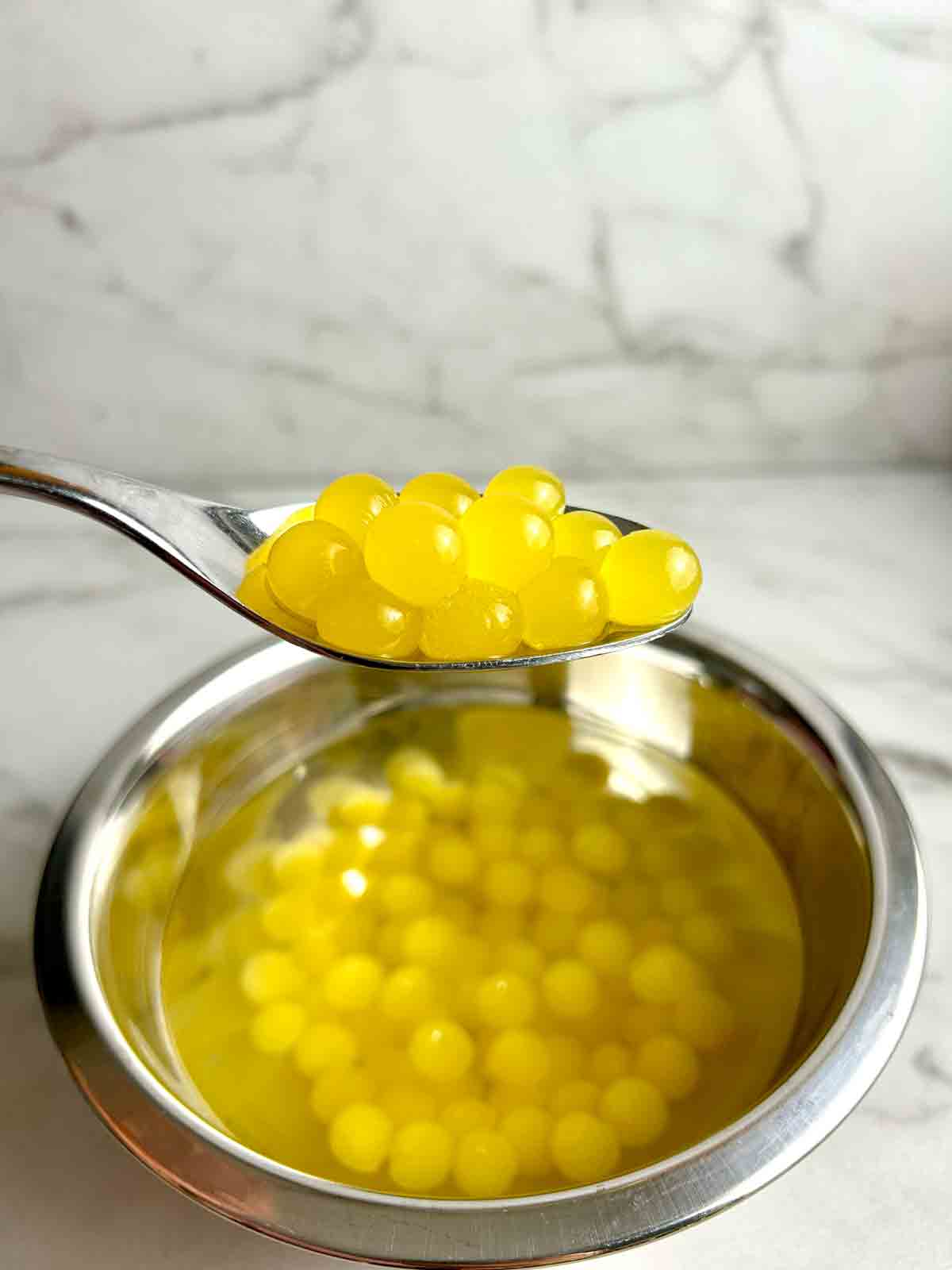
One thing to keep in mind is that with spherification, the liquid will eventually turn into gel, so you cannot make this too far in advance. The bobas will only have the "popping" effect for about 30-60 minutes so it's best to eat them immediately.
Important ingredients
Sodium alginate: This is what gets dissolved into your flavorful liquid. It's a gelling agent made from algae. You usually need to use around 0.5-0.7% of it in the liquid's weight. So if you have 200g of liquid, you need 1-1.4g of sodium alginate (200g*0.005=1g and 200g*0.007=1.4g). But I have found that using slightly more gives better results. I recommend around 2.5g for 200g of liquid.
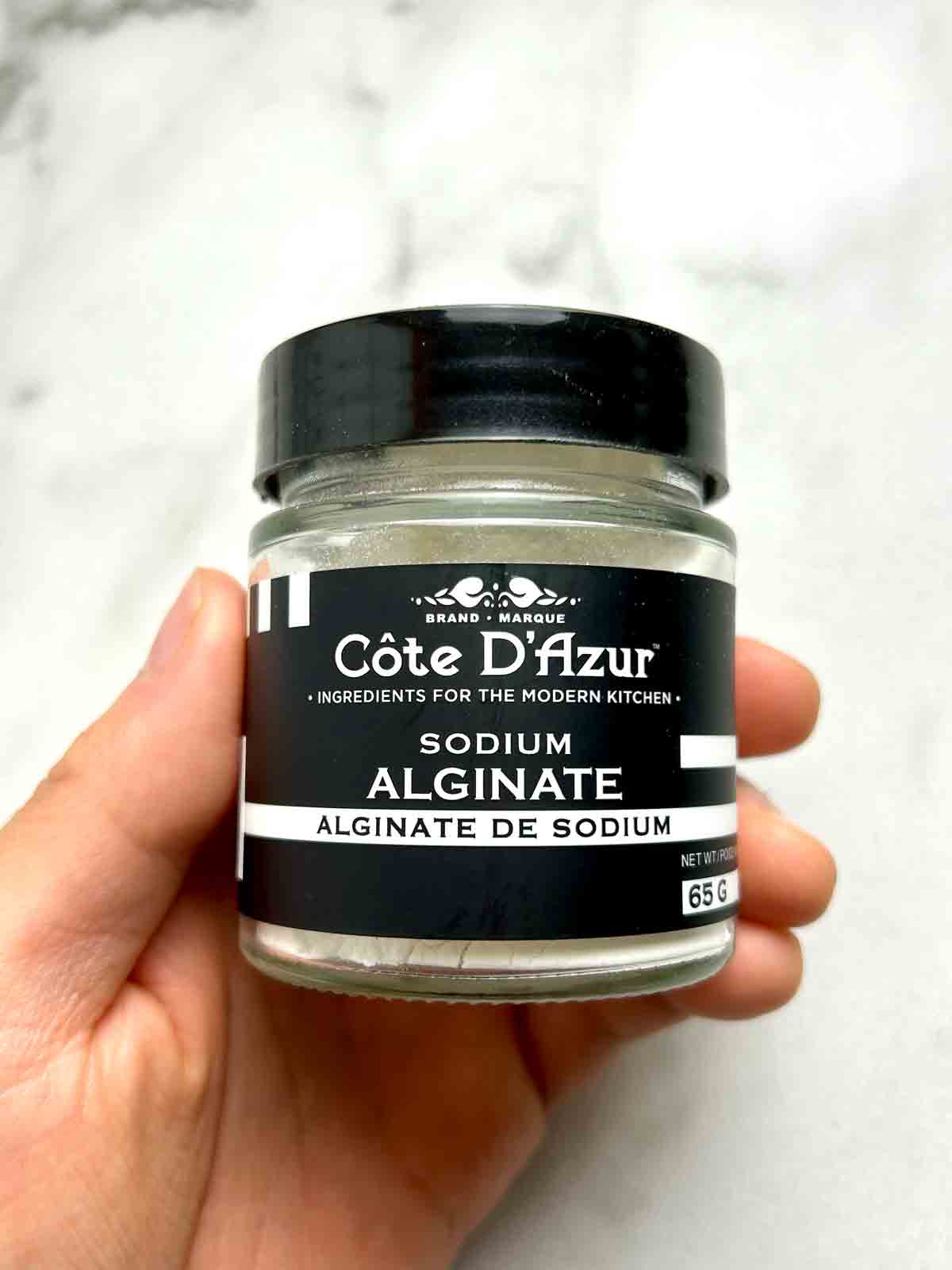
Calcium lactate (or calcium chloride): For the calcium bath, you can either use calcium lactate or calcium chloride. Both options work, but calcium lactate is better in my opinion because calcium chloride has a bitter aftertaste.
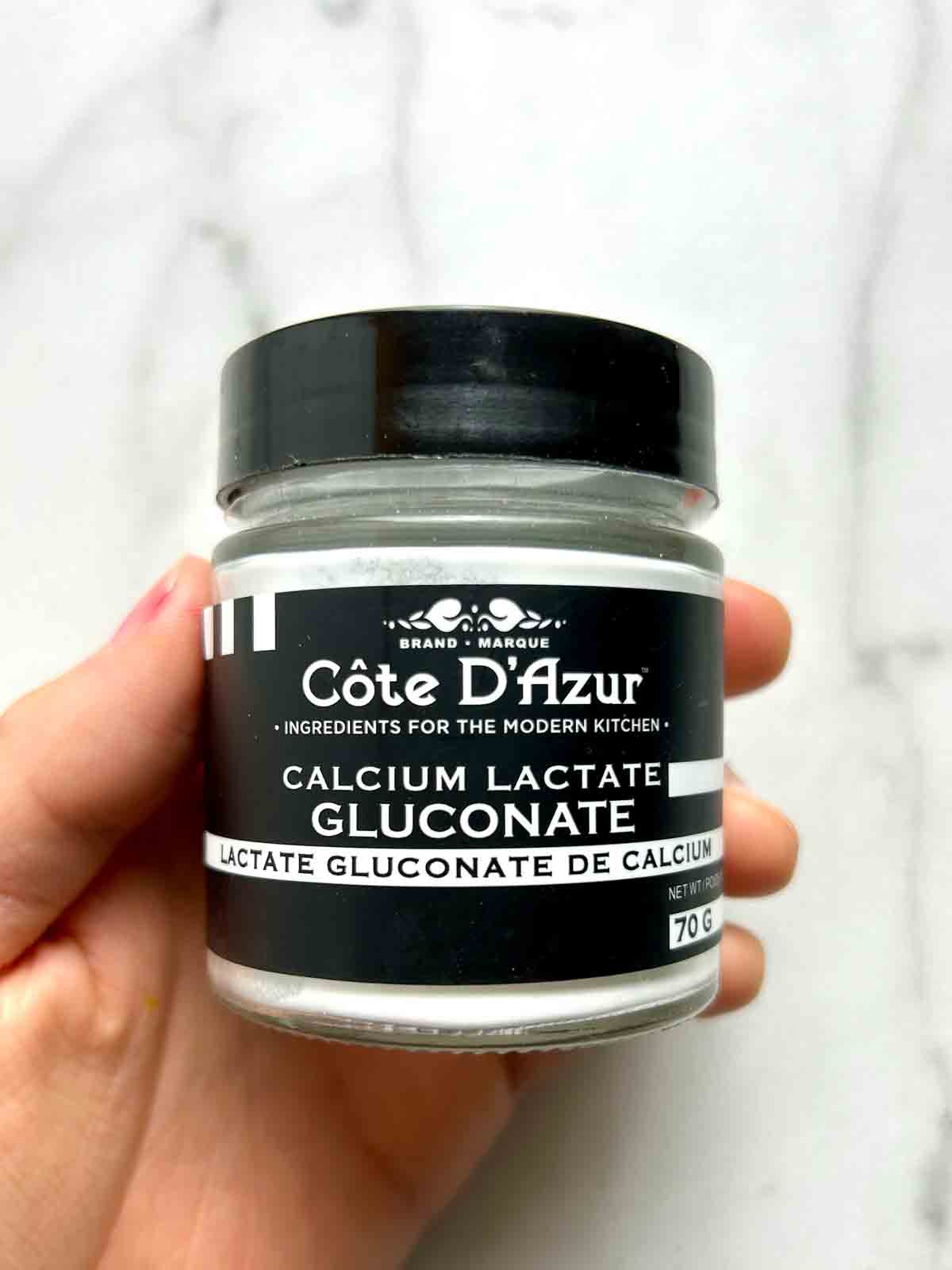
Distilled Water: I would highly recommend using distilled water for making the mango juice. The reason is because tap water and spring water contain calcium which can cause the mango juice to solidify early once the sodium alginate is mixed in.

How to make popping boba?
Step 1) Make the boba liquid
First, you want to make the mango juice. You'll need mango chunks (I used frozen mango), sugar, and distilled water. I had to heat the sugar with some distilled water on the stovetop first to dissolve it, then I blended everything together in a blender.
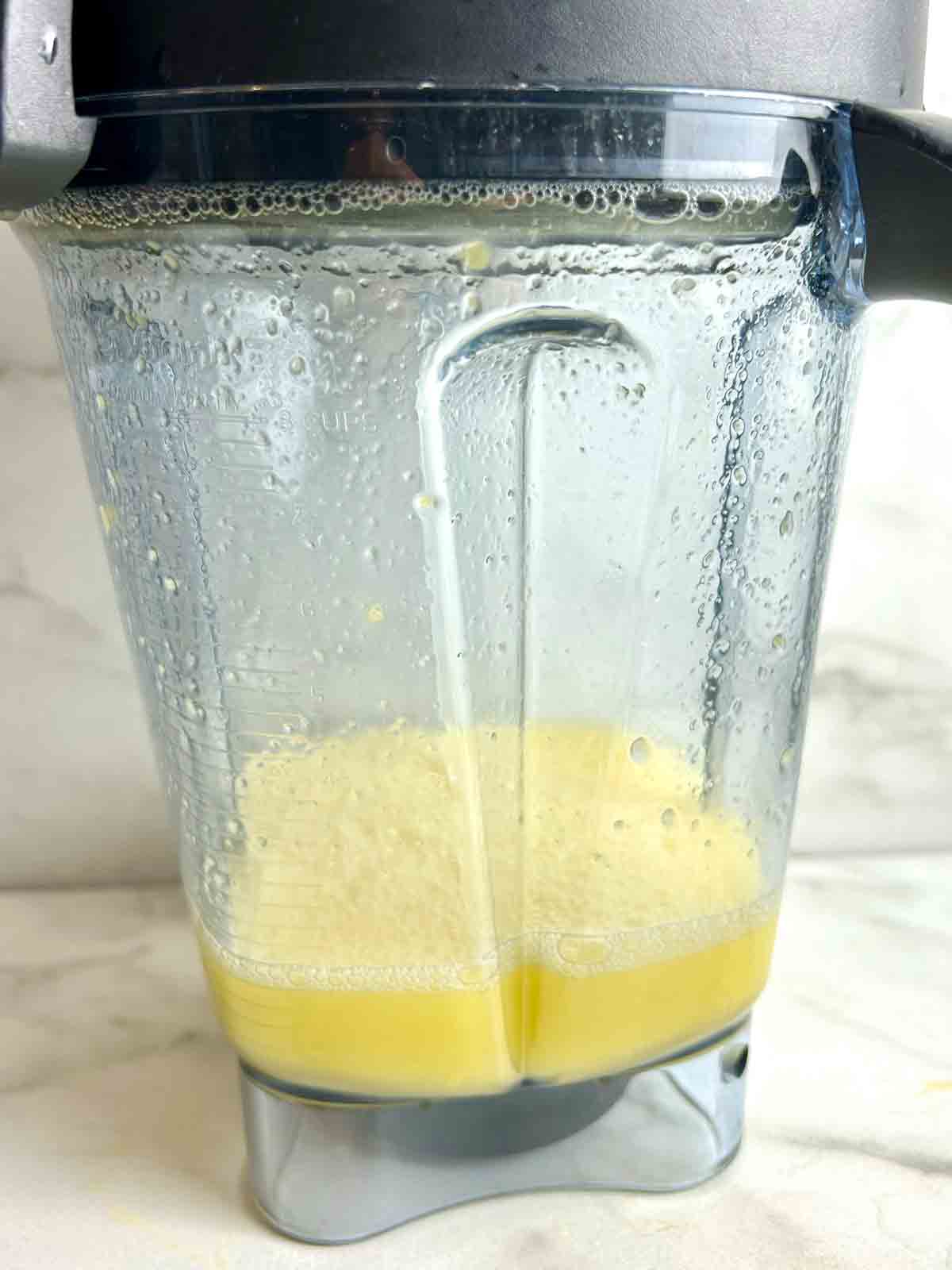
Then I transferred the liquid to a measuring cup. I used a precision scale to get the correct amount of sodium alginate, then I used a hand blender to dissolve it into the liquid. Sodium alginate is very sticky, so I had to use a spoon to scrape it off the bottom of the measuring cup.

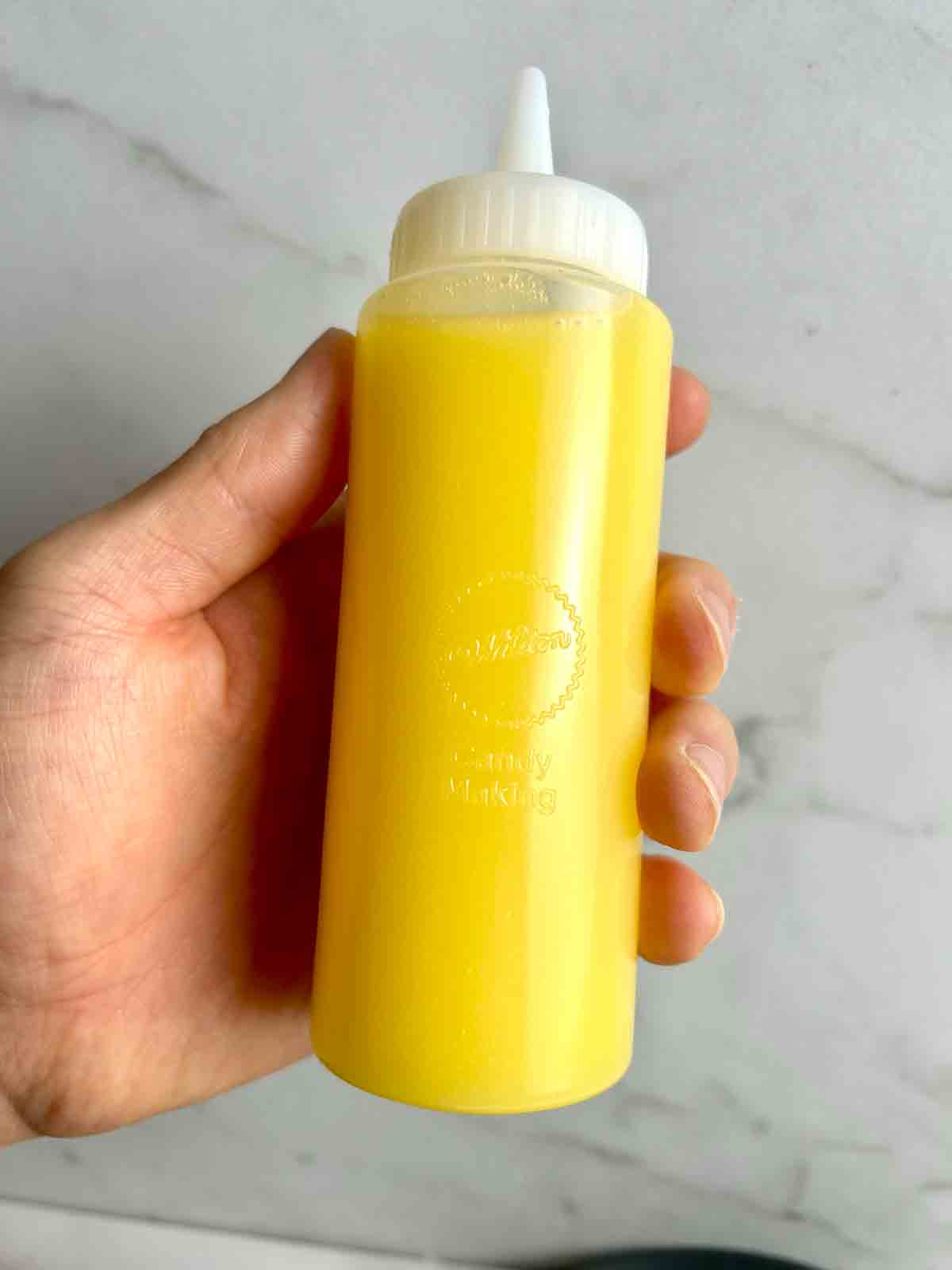
As you can see, the liquid thickens quite a bit and there are a lot of bubbles. You need to let it rest in the fridge for 2-4 hours for the bubbles to dissipate.
Step 2) Make a calcium bath
This is much easier than the previous step. All you do is combine the calcium lactate with water.

Step 3) Drop the boba liquid into the calcium bath
I have found a small measuring spoon (¼ teaspoon) works great for this. Make sure you dip the measuring spoon into the calcium bath first to coat it in the calcium. Then use a squeeze bottle to fill up the measuring spoon with the boba liquid and submerge it in the bath. After 1 second, tip out the liquid and you have a popping boba!
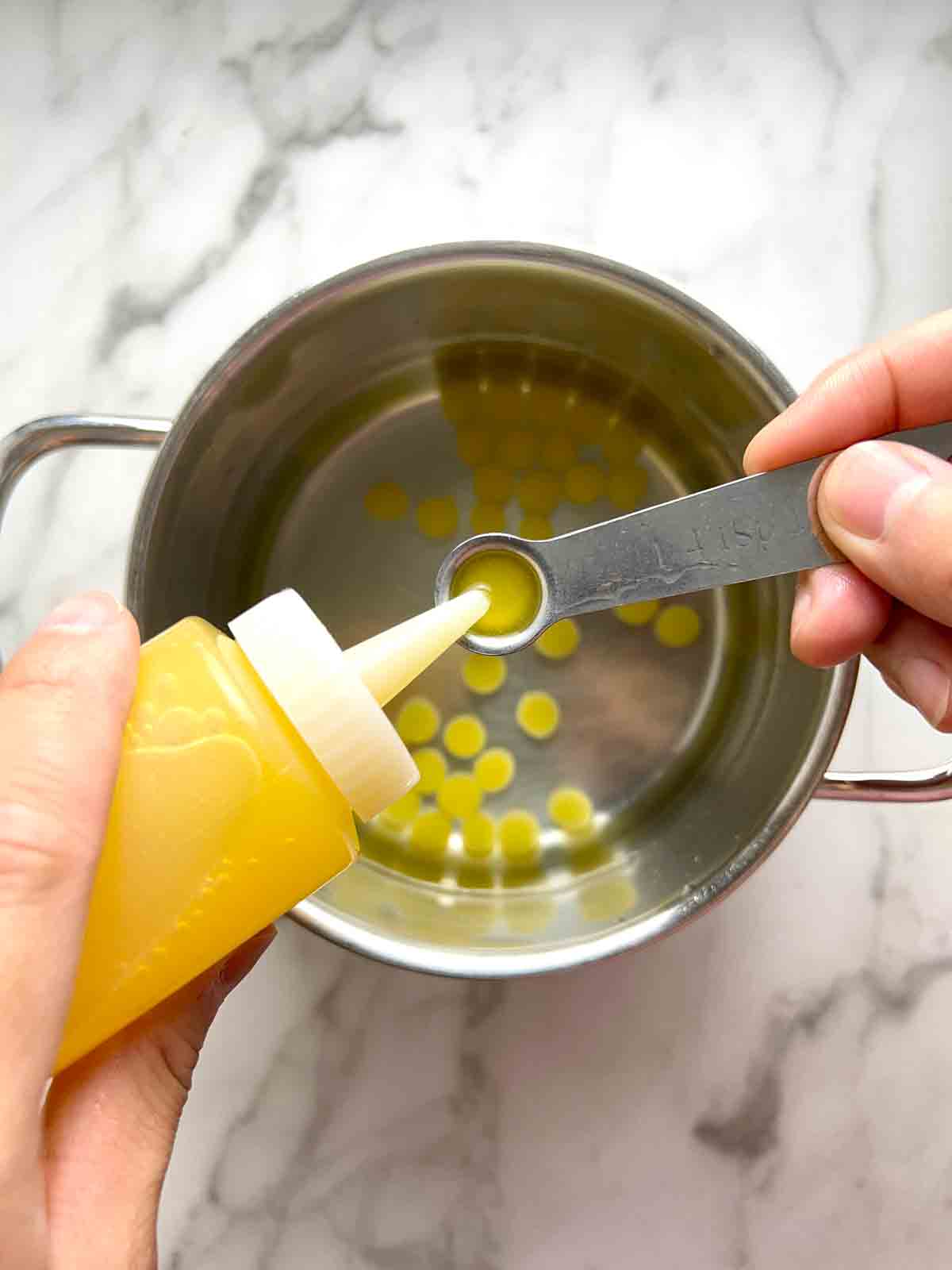
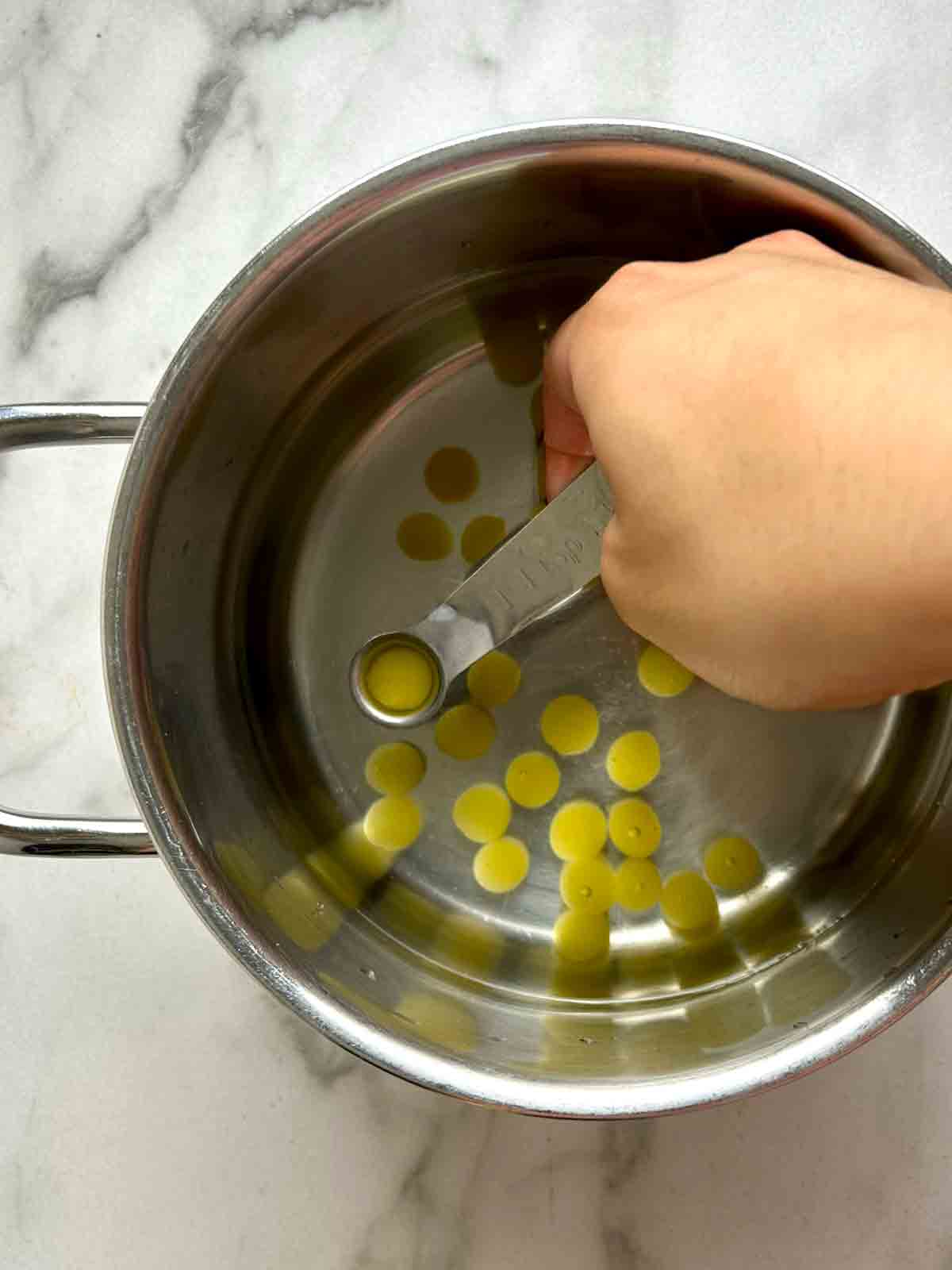
Once the boba is set, transfer it to a bowl of clean water to rinse off the calcium and then to another bowl of clean water for holding.
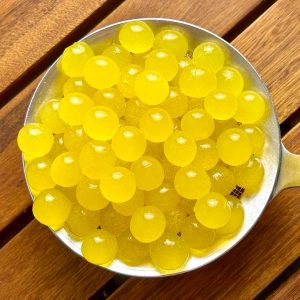
Popping Boba
Ingredients
Boba liquid
- 4 teaspoons sugar
- 205 g distilled water (see notes)
- 50 g mango chunks (I used frozen mango)
- 2.5 g sodium alginate (about 1 ¼ teaspoons)
Calcium bath
- 4 cups water
- 10 g calcium lactate (or calcium chloride; about 2 tablespoons)
Instructions
To make the boba liquid
- Heat 4 teaspoons of sugar with 30g (2 tablespoons) of distilled water in the microwave or on the stovetop until the sugar dissolves.
- To a blender, add the mango chunks, the sugar mixture, and the remaining 175g (¾ cup) of distilled water. Blend until smooth. Then, transfer the liquid to a measuring cup. Use a hand blender to mix in the sodium alginate (make sure to scrape any sodium alginate that is stuck to the bottom of the measuring cup).
- Pour the liquid into a squeeze bottle and transfer to the fridge for 2-4 hours to allow the bubbles to dissipate. If you don't care about having bubbles, you can actually use the liquid immediately, but the boba might float when you make them.
To make the calcium bath
- Combine the water and calcium lactate in a bowl. Whisk until the calcium is dissolved.
To make the boba
- To make the boba, I like to use a small measuring spoon (¼ teaspoon). First, dip the measuring spoon into the calcium bath to coat the bottom of the spoon. Squeeze the boba liquid into the measuring spoon until full. Lower the spoon into the water and hold for 1 second. Tip the boba out of the spoon.
- Let the boba set for about about 1 minute then transfer to a bowl of water to rinse off the calcium. Then, transfer to another bowl of water for holding. Please note, these are best enjoyed IMMEDIATELY as the boba liquid will continue to gel as time goes on. I've noticed they stay "popping" for about 30-60 minutes.

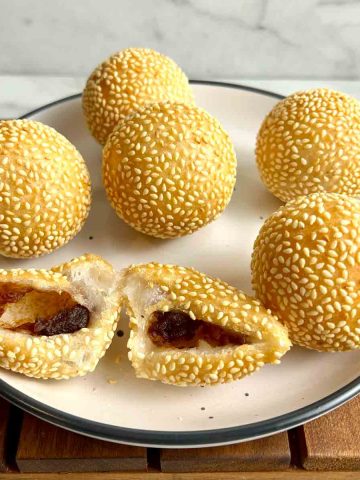

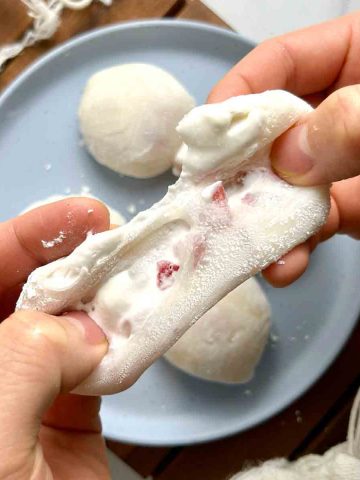
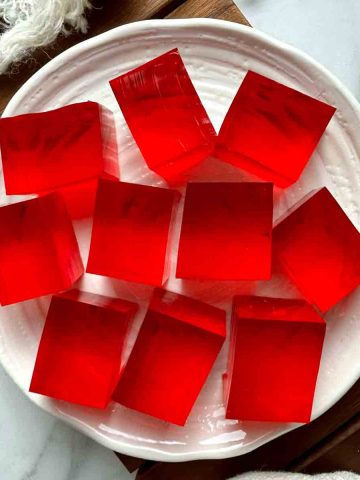
Leave a Reply